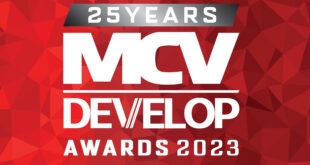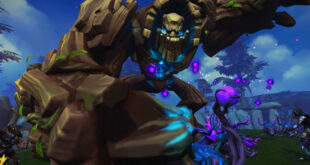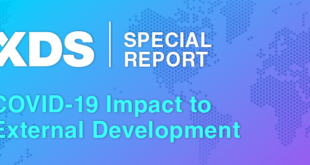The Indian gaming industry was pretty much non-existant in 1997 when Dhruva Interactive came into existence. One of India’s oldest game companies, Dhruva is the brainchild of Rajesh Rao, who is today also the chairperson of the NASSCOM Gaming Forum, India’s largest game developers’ community.
Dhruva has established itself as one of India’s premier game outsourcing studios, having worked with several major publishers on close to 50 triple-A games. With the company in its 15th year and with the 2012 edition of the NASSCOM Game Developer Conference just a couple of days away, we catch up with Rajesh Rao as he recaps the last 15 years of the Indian games industry and his role in it.
MCV India: How did Dhruva Interactive come into existence and what prompted you to enter the gaming space all those years ago?
Rajesh Rao: I started my first company in 1995. It was a media company that I started immediately after college. We moved from multimedia to gaming in 1997 based on a hunch that gaming would eventually be very big in India. We had a technological collaboration with Intel, through which we built our own game engine. By mid-98 we had something to show, and went out and met potential publishers and partners in the international community because we realised that there was no market in India at the time. So if we had to survive, we knew that we would have to go out and work with international companies.
"If we had to survive, we knew that we would have to go out and work with international companies."
We built a PC game engine that was very contemporary because it was optimised for the Pentium 2 processor and AGP ports, which were just releasing at that time. So it was a good market opportunity and we went around showing it to people. We got our break with Infogrames, which is now Atari. They had a successful N64 game called Mission: Impossible, and they gave us to the opportunity to port it to the PC. Because it was a big IP, we got a lot of international press, and that was our foothold in the industry.
That’s when we realised that while we wanted to make our own games for the Indian audience, it was still too early, so we decided to focus on building the services business. At the same time, we wanted to work more with international companies because we had a lot to learn in terms of game development.
MCV: Did you decide that at some point you’d move towards developing your own games?
Rao: We figured that we’d stay in the services space for a while and then move towards developing games for India, but the services business then exploded and we didn’t see any reason to move away from that. We did have a small product team, and we did some Flash stuff in the Dotcom days – 2001-02. We also had a mobile team when mobile gaming first took off. We did quite well for ourselves.
With the revenues and the market share what it was, we realised that our strategy of making a few good games each year wasn’t cutting it in terms of making it a profitable business. So we exited the mobile space in 2008. In 2009, we realised that products and services cannot coexist, so we split product services into a separate company called GameTantra. So all IP initiatives are now invested there, while Dhruva continues to be the services company.
MCV: Does Dhruva continue to port games, or do you just provide outsourcing services for specific aspects of games, such as art?
Rao: We haven’t done any ports after Mission: Impossible, because there was a lot more business in content creation. While we got that first break with Infogrames, we found most other companies found it risky to work with an Indian company, and perhaps rightly so given the ever-rising game development costs. At the same time, the talent in India didn’t have any exposure to full game development. The amount of time we had to keep people in training before they were industry-ready was very long. So we consciously decided to do things that we could do and could scale.
MCV: Dhruva has done some great work on the Forza Motorsport and Project Gotham Racing franchises. Can you tell us about some of the other clients and projects you’ve worked with?
Rao: We’ve worked on around 45-50 triple-A games over the last 15 years and our clients are most of the major publishers. We’ve worked with EA, Disney Interactive Studios, Codemasters, Sony, and many first and third party studios working with Microsoft. We also worked with Capcom on Dead Rising 2. We’ve worked on the Need for Speed series and on Pure for Blackrock Studios. More recently, we had quite a large engagement on Star Wars Kinect. We worked on that for a big part of last year and it was significant for us because we did a lot of environments, the pod racers, as well as some of the characters.
MCV: So is it mostly in-game assets that Dhruva works on?
Rao: Integrating assets into levels and delivering game-ready content back to the client is a bulk of what we do. The business has evolved from simply asset creation, and now it’s more about creating in-game content. Typically, we’re part of the development pipeline and we usually act as an extension of the main development team. We have the same builds and dev and debug kits that they have. We’re able to test the content we create within the game and then deliver it to the client.
MCV: Is there more competition from companies in other countries for game outsourcing than there would be for call centres and other forms of business outsourcing?
Rao: As far as game outsourcing goes, India is clearly an underdog. We’re playing catch-up with China, which has a large game outsourcing industry. The fact that China has a local gaming industry works in its favour, so people who’ve grown up gaming are now game developers. It’s similar to how India has an advantage with English and engineers. But one thing we’ve managed to show our clients is that despite not having that scale or variety, what we do, we do very well. We’re very reliable and we have a great service ethic in India. Many companies also realise that it makes sense to have a China and India strategy rather than having all their eggs in one basket. We’ve never lost a client because our work wasn’t good enough. Most of our clients are repeat clients.
"We’ve never lost a client because our work wasn’t good enough. Most of our clients are repeat clients."
MCV: With the services business being such a focus, has the GameTantra studio taken a backseat? Is the studio working on any games right now?
Rao: It was never a large team. They have their own mandate – to make good games for the Western audiences, because we’re still waiting for the Indian market to develop from a monetisation perspective. In the end, we’re an Indian company and the Indian market will evolve and it will be big. When that happens, we’ll be in a position to exploit all these years of experience. We have a very keen sense for production values and you can see that in all the work we do. GameTantra has its roots to the very inception of Dhruva. We’ve won 4-5 FICCI awards and our games make money. Last year, we released a game internationally, and it went to #42 on the paid charts. We have a couple of games planned for release this year. One is called Spooky Treats, which is out now, while the other one is as yet unannounced.
MCV: You said you started Dhruva in 1997 because you expected gaming to get big in India some day. Are you surprised that it’s taking this long to happen?
Rao: For sure. We just figured that how can a country like India, with such a huge young population, not have a gaming market. At that time, PC penetration was growing and we thought India was going to be a PC gaming market. But yes, it has taken time it’s still not perhaps as big a market as we would have liked it to become, but we’re now seeing credible signs of it developing into a monstisable market.
MCV: Do you think that there’s a perception in the West that Indians aren’t capable of making high quality, international level games?
Rao: The perception is largely influenced by the fact that they don’t see India as a market, and hence the sensibility towards gaming is poor. It’s a lot less of a concern now for iOS and Android games, but for anyone from India pitching a console game, there may be someone at the publisher end who sees potential in that developer’s talents, but he still has to get his management to sign off on it. It’s a big risk, especially when there are so many other options. There are experienced Eastern European developers who can make better games at lower costs because they have a gaming culture and they’ve been developing for decades. Teams in India will have to show some high quality work to be able to convince publishers.
MCV: Do you agree that Indian developers aren’t very experimental with new IP? You mostly see stuff like cricket and Bollywood being done, and not a lot of studios are doing original IP.
Rao: I guess cricket and Bollywood are the most obvious content bets to take. I do admit that there is a need for more innovation and more ideas. Cricket and Bollywood are obvious bets and for a good reason. If you’re trying to reach out to the mass market, you’re better off using names like Dhoom or Ra One or IPL than with something original that people don’t know about. I think the time has definitely come for that kind of experimentation, but you will have to back that up with good marketing and budgets. That poses a challenge because a lot of the companies are working on shoestring budgets. We have some developers who are being funded by guys like Sony India to grow the console market in India. In those cases, the marketing is taken care of by the publisher, but if you’re an independent developer and you decide to make an original Indian game, the onus of publishing is entirely yours.
MCV: You head the NASSCOM Gaming Forum. Can you tell us a little about how it was set up and its purpose?
Rao: The NASSCOM Gaming Forum (NGF) evolved out of a larger forum that was called the Animation and Gaming Forum. The first time NASSCOM Animation Conference was held in 2003, and at that time, they wanted one session on games, which I conducted. The NASSCOM Animation Forum then became the Animation and Gaming Forum. For reasons unique to India, animation and gaming got talked about in the same breath, mainly because both animation and gaming took off because of services, and several animation companies also provided gaming content services. As gaming grew, it went from being one session at that animation event to growing to a full-day event in parallel. I think it was in 2009 that I told the NASSCOM guys that ‘Look, let us take the initiative and do a developer event.’ So we did a one-day developer conference called the NASSCOM Game Developer Summit.
The core focus area of NGF is sharing experiences and learning from one another. Some of the older players have grown up after years of making mistakes. We all grew in silos and we never really talked to each other. One of the motivators for me was to make this a platform where we can all share our learnings so that all the new guys don’t make those mistakes. While this space is very exciting today and it’s attracting capital, for most part, this has been a space that has attracted very little funding. And where capital is scarce and teams are dipping into savings from early careers in other fields, it’s important to make sure that the capital is utilised in the most efficient way. They can make new mistakes; that’s just fine, but It’s pointless for them to make all the mistakes that were made by others before. That is why we focus a lot on post mortems. That’s the best way to say, ‘Hey, this is what we did, this is what went right, this is what went wrong’. We also try to keep the discussion relevant to what developers are currently doing in India. Given the fact that we have so many indie teams in India, we’re focused very heavily on indie development at the GDC this year.
"The core focus area of the NASSCOM Gaming Forum is sharing experiences and learning from one another."
MCV: NGF is run by several people who also have their own companies to run. So how do you manage to stay on course and make sure the forum doesn’t get neglected?
Rao: Since I became the chair of NGF, my mandate has been clear – we’ve got to make this a very inclusive forum, where we reach out to everybody. Sometimes, such forums can be very personality-driven and dependent on one person to provide that momentum. I did not want that because you could get busy with your work and the forum’s agenda could suffer. I wanted this to be extremely inclusive and democratic. So we reached out to all the companies and we have almost everybody onboard. We formed an advisory panel, which has some of the bigger studios or their heads or country heads on board.
When it came to the conference, I felt that we should have studio guys running the content screening process, so we created a content committee and the screening happens in the hands of the right people. We have weekly calls for content and one every fortnight for marketing and strategy, which is driven by the advisory board. It works beautifully and the good part is that because we have a team rather than an individual, if there are a few who are busy at any point of time, there are others who can step in to make sure we don’t lose momentum.
MCV: How is this year’s NASSCOM Game Developer Conference shaping up?
Rao: This year, we’re targetting 1,200 attendees for the two-day event; three days if you count the Build Your Own Game competition. It’s a packed agenda with many international speakers, so it’s really evolving in a great way. It’s also a reflection of the fact that the development eco-system in India is growing at a great pace. In January 2010, we were tracking 25 gaming companies in India. Right now, we’re tracking 140. To a large extent, it’s because of iOS and Android; everybody’s trying to take their chance at making a product that will become big. That’s great and it’s exactly how it should be. More developers means more ideas and we’re just statistically improving the chances of success here.
MCV: How do you see GDC growing year on year? Are you seeing more international interest?
Rao: Oh, absolutely. Being in this industry for so long, I was able to speak to people I know well and invite them to speak. Even when it was the Animation and Gaming Conference, we had people like Shiraz Akmal, who was then heading THQ’s XDG group, to come and speak. We had Ed Fries, who created Microsoft Game Studios. I know him very well; he’s an advisor for Dhruva as well. Once you have some well known people in the industry who have come to your event, it helps when you go out and invite new guys. There’s an earnest effort to build an eco-system in India and letting people know that there is a conference that is focusing on the developers has helped.
MCV: What can someone who’s new to NGDC – maybe students or new developers – expect from this year’s conference?
Rao: This is the place to meet the entire eco-system in one place. So you can meet with publishers, you can meet with potential investors, you can meet with all the other studios; everybody will be there. This has now become that one central platform. This is a great place for you to potentially form new teams because there could be a lot of people who are looking to get into the industry. There will be lots of post mortems and workshops, so there will be lots to learn as well. A lot people come to our event with their game prototypes and their ideas, because the people there are happy to give feedback. For anyone who wants to do anything in this space, it’s a good place to be.
Sign up for the free MCV India newsletterhere.

 MCV/DEVELOP News, events, research and jobs from the games industry
MCV/DEVELOP News, events, research and jobs from the games industry



